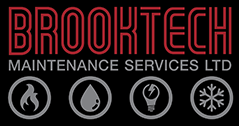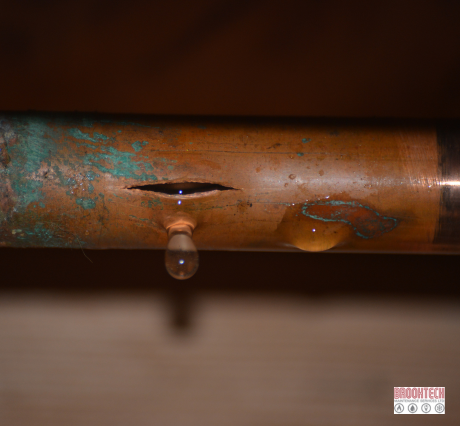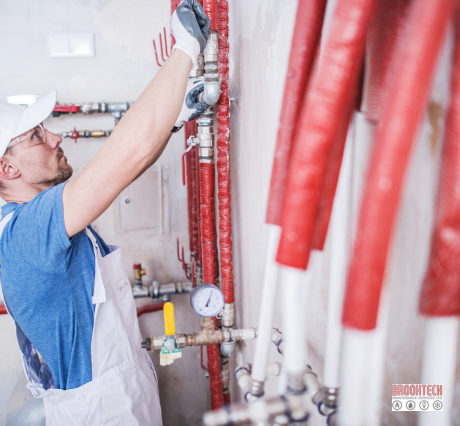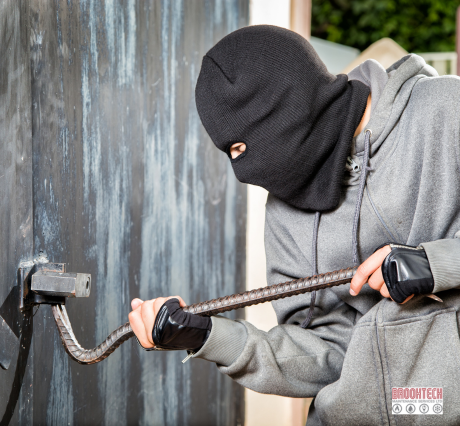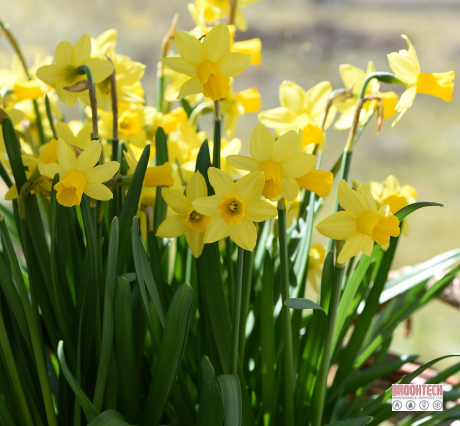5 Essential Steps to Handle Frozen and Burst Pipes and Prevent Costly Winter Disasters
How to Handle Frozen and Burst Pipes in Your Business Property
Winter brings many challenges for businesses, and frozen or burst pipes are among the most disruptive. Not only can they halt operations, but they also pose significant safety and property damage risks. For commercial properties, addressing frozen and burst pipes quickly and effectively is essential to minimise downtime and maintain a safe environment.
In this blog, we’ll explain how to identify and handle frozen pipes, what to do if a pipe bursts, and how planned maintenance can help you avoid these problems altogether.
What Causes Frozen and Burst Pipes?
When temperatures drop, the water inside pipes can freeze. As water freezes, it expands, putting immense pressure on the pipe walls. This can lead to cracks or complete bursts, which are costly to repair and can cause severe water damage.
Pipes in unheated or poorly insulated areas, such as basements, crawl spaces, or external walls, are most at risk. Preventative measures, such as proper insulation and regular maintenance, are critical for minimising the risk of freezing.
Signs of Frozen Pipes
Identifying frozen pipes early can prevent them from bursting. Look out for these warning signs:
- No Water Flow: If water doesn’t flow from a tap or is reduced to a trickle, the pipe feeding it may be frozen.
- Frost on Pipes: Visible frost or ice on exposed pipes is a clear indicator.
- Unusual Noises: Gurgling or banging sounds can signal freezing or blockages caused by ice.
- Cold Spots: Unusually cold sections of a wall or floor could indicate a frozen pipe behind the surface.
If you spot these signs, it’s crucial to act fast to avoid further complications.
How to Handle Frozen Pipes
Frozen pipes require careful handling to prevent further damage. Follow these steps to address the issue:
1. Turn Off the Water Supply
Locate the main water valve and turn it off to prevent water from flowing into frozen areas. This reduces the risk of pressure build-up and bursting.
2. Open Taps
Open all taps connected to the frozen pipe to relieve pressure and allow melting water to escape once the pipe begins to thaw.
3. Apply Heat
Gradually thaw the pipe using safe heat sources, such as a hairdryer, heating pads, or warm towels. Never use an open flame, as this can damage the pipe and create a fire hazard.
4. Monitor Progress
Keep a close eye on the pipe as it thaws to ensure there are no leaks or cracks. If you notice any damage, stop and call a professional immediately.
5. Contact a Specialist
If the pipe remains frozen or you’re unable to access it safely, contact a maintenance provider like Brooktech to handle the issue professionally.
What to Do If a Pipe Bursts
A burst pipe requires immediate action to limit damage and maintain safety. Here’s what to do:
1. Shut Off the Water
Turn off the main water supply immediately to stop the flow of water from the burst pipe.
2. Drain the System
Open all taps to drain any remaining water from the system. This reduces the amount of water leaking from the burst pipe.
3. Turn Off Electrical Appliances
If water is near electrical outlets, appliances, or wiring, turn off the power to the affected areas to prevent electrocution.
4. Contain the Water
Use buckets, towels, or mops to contain leaking water and prevent it from spreading. Focus on protecting valuable equipment and furnishings.
5. Call a Professional
A burst pipe often requires significant repairs or replacement. Contact Brooktech for fast and reliable assistance to minimise downtime and restore your property to full functionality.
Preventing Frozen and Burst Pipes
Preventative measures are the best way to avoid the hassle and cost of frozen or burst pipes. Here are some tips:
- Insulate Pipes: Wrap pipes in exposed or unheated areas with foam or other insulating materials to keep them warm.
- Maintain a Consistent Temperature: Keep the thermostat set at a consistent temperature, even during non-business hours, to prevent freezing.
- Seal Drafts: Check for and seal gaps around windows, doors, and pipe entry points where cold air can enter.
- Schedule Regular Maintenance: Planned maintenance helps identify vulnerable pipes and ensures your systems are prepared for winter.
- Monitor Water Flow: Pay attention to water flow during cold snaps, and take early action if you notice a problem.
How Brooktech’s Planned Maintenance Can Help
At Brooktech, we understand the challenges that winter poses for commercial properties. Our planned maintenance packages are designed to keep your systems running efficiently year-round, reducing the risk of frozen and burst pipes. With Brooktech, you benefit from:
- Proactive Inspections: Regular checks identify potential issues, such as poor insulation or pipe vulnerabilities, before they cause problems.
- Rapid Emergency Response: In the event of a frozen or burst pipe, our skilled technicians are on hand to provide fast and reliable repairs.
- Customised Solutions: We tailor our services to meet the specific needs of your property, ensuring year-round peace of mind.
Don’t let winter weather disrupt your business. Contact Brooktech today to learn more about how our planned maintenance packages can protect your property and keep your systems in top condition.


